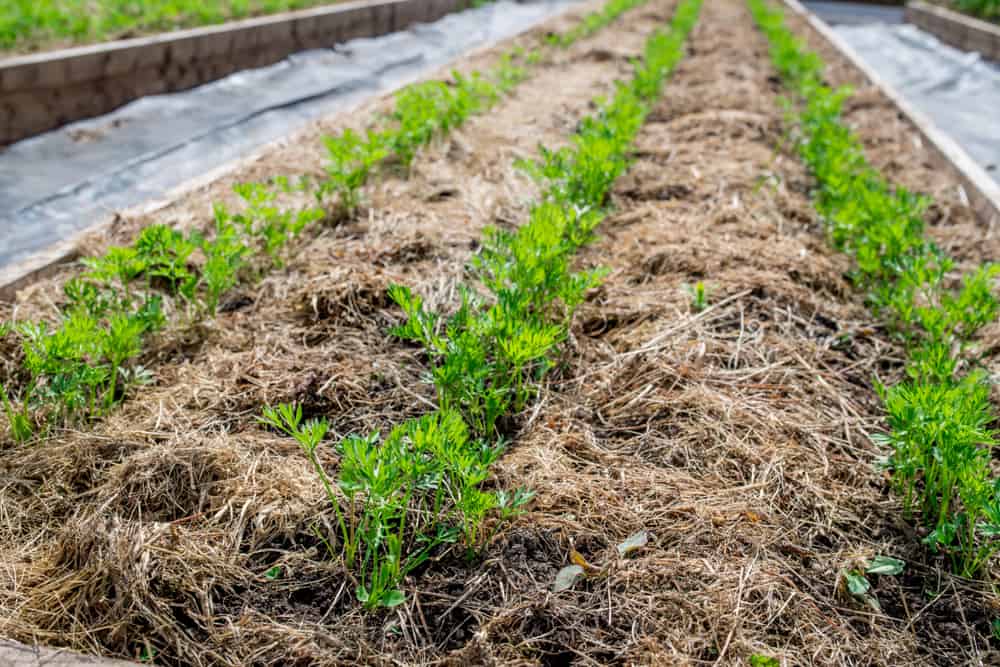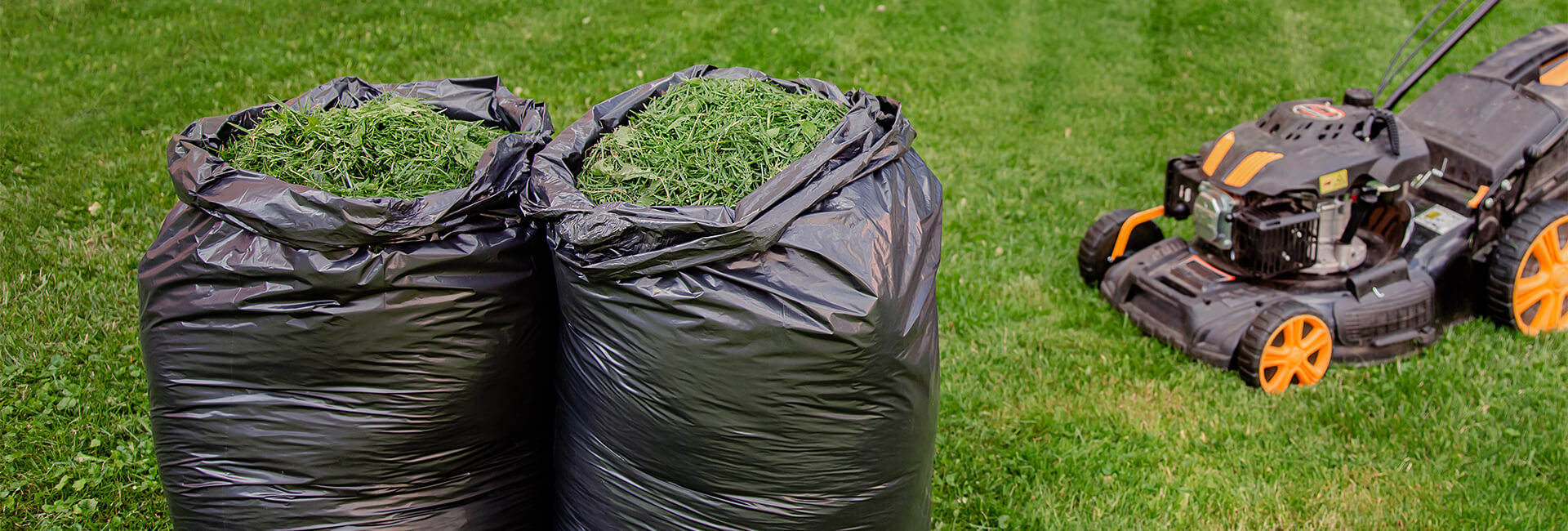As an Amazon Associate, I earn from qualifying purchases.
Pros: Grass clippings provide nutrients and retain soil moisture. Cons: They can harbor pests and may cause matting.
Using grass clippings as mulch offers both benefits and drawbacks. Gardeners often consider it because clippings are readily available and free. These clippings decompose quickly, releasing essential nutrients back into the soil. This can enhance plant growth and soil health.
Grass clippings also help retain soil moisture, reducing the need for frequent watering. However, they can also harbor pests and disease if not properly managed. Additionally, thick layers may cause matting, which can block water and air from reaching plant roots. Proper application and monitoring are essential to maximize benefits and minimize problems.

Credit: www.yourgreenpal.com
Grass Clippings As Mulch
Mulching is covering soil with organic matter. It helps keep soil moist. Mulch also reduces weeds. People use different materials for mulching. Grass clippings are one of these materials.
Grass clippings are easily available. They are also free. They help save water by keeping soil moist. Clippings add nutrients to the soil. This helps plants grow better. Grass clippings also reduce waste. Instead of throwing them away, use them as mulch.

Credit: yardsuccess.com.au
Benefits Of Using Grass Clippings
Grass clippings decompose quickly. They release essential nutrients into the soil. These nutrients help plants grow stronger. Nitrogen in the clippings boosts plant growth. They are a natural and cost-effective fertilizer.
Grass clippings help keep the soil moist. They act as a protective layer. Water stays in the soil longer. This helps plants during dry periods. Less watering is needed, saving time and resources.
Grass clippings cover the soil. They block sunlight from reaching the weeds. Weeds cannot grow without light. This reduces the need for chemical weed killers. It’s an eco-friendly way to manage weeds.
Potential Drawbacks
Grass clippings might contain weed seeds. These seeds can grow in your garden. This means more weeds to remove. It can be a lot of extra work.
Grass clippings can attract pests. Bugs and insects love to hide in clippings. This can cause problems for your plants. It may lead to infestations.
Fresh grass clippings have high nitrogen. Too much nitrogen can harm plants. It may cause yellow leaves and weak growth. Mixing clippings with other mulch can help.

Credit: m.youtube.com
Best Practices For Using Grass Clippings
Ensure clippings are free of pesticides and herbicides. Let them dry for a day before use. This helps avoid clumping and mold growth. Spread them evenly to prevent thatch buildup. Remove any large sticks or debris.
Keep the mulch layer 2-3 inches thick. Too thick can smother plants. Thin layers might not retain moisture well. Adjust thickness based on plant needs and weather conditions.
Grass clippings decompose faster in warm weather. Use thinner layers in summer. In fall, use thicker layers to protect plants from frost. Avoid using clippings in wet seasons as they may rot.
Expert Tips For Success
Mixing grass clippings with other mulches can be beneficial. Grass clippings decompose quickly, providing essential nutrients. Combining them with wood chips or straw slows down decomposition. This mix prevents the mulch from matting down and blocking water. Ensure the grass is free of chemicals or pesticides before mixing.
Regularly check the soil’s health when using grass clippings. Grass clippings can sometimes raise the soil’s nitrogen levels too high. This can harm certain plants. Test the soil every few months to ensure balanced nutrients. Healthy soil supports robust plant growth.
Composting grass clippings is an excellent way to use them. Start by creating a compost pile in your garden. Add grass clippings in thin layers to avoid matting. Mix with other yard waste like leaves and kitchen scraps. Turn the compost pile regularly to ensure even decomposition.
Environmental Impact
Using grass clippings as mulch helps in reducing garden waste. Grass clippings that are left on the lawn decompose and return nutrients to the soil. This method decreases the need for landfill space. Grass clippings can also reduce the number of yard waste bags used. This practice is both eco-friendly and cost-effective.
Grass clippings serve as a natural fertilizer. They help retain soil moisture, reducing the need for frequent watering. Clippings also help in suppressing weeds. This leads to healthier plants without using chemicals. Mulching with grass clippings promotes sustainable gardening practices.
Grass clippings can affect local wildlife in various ways. They create a habitat for insects and small critters. Clippings also provide a food source for worms and other decomposers. This can boost the local ecosystem. Yet, too thick a layer may smother plants or harm delicate insects.
Case Studies And Real-life Examples
Using grass clippings as mulch can enrich soil nutrients and retain moisture, yet it may introduce weed seeds and pests. These case studies highlight both the benefits and challenges gardeners face with this method. Real-life examples demonstrate varying outcomes based on local conditions and maintenance practices.
Home Garden Success Stories
Many home gardeners have seen great results using grass clippings as mulch. One gardener from Ohio used grass clippings in her vegetable garden. She saw a huge increase in plant growth. The clippings helped keep the soil moist and cool. Another gardener in California used grass clippings around his fruit trees. He noticed fewer weeds and healthier trees. The added nutrients from the clippings made a big difference. These examples show that grass clippings can be very effective in home gardens.
Professional Landscaping Insights
Professional landscapers also use grass clippings as mulch. They find it to be a cost-effective solution. One landscaper in Texas used grass clippings on a large estate. The results were impressive. The clippings decomposed quickly, enriching the soil. Another landscaper in Florida used grass clippings in a public park. It helped reduce waste and improve soil quality. These professional insights highlight the benefits of using grass clippings in larger projects.
Frequently Asked Questions
Can Grass Clippings Be Used As Mulch?
Yes, grass clippings can be used as mulch. They help retain soil moisture, suppress weeds, and add nutrients to the soil as they decompose.
What Are The Benefits Of Grass Clippings Mulch?
Grass clippings mulch provides several benefits. It conserves soil moisture, suppresses weeds, and enriches the soil with organic matter and nutrients.
Are There Any Drawbacks To Using Grass Clippings?
Yes, there are drawbacks. Fresh grass clippings can mat down and create a barrier, preventing water and air from reaching the soil.
How Thick Should Grass Clippings Mulch Be?
Apply grass clippings mulch in a thin layer, about 1-2 inches thick. This prevents matting and allows proper air and water penetration.
Conclusion
Using grass clippings as mulch has both benefits and drawbacks. It can enrich soil and save money. But, it may also harbor pests and weed seeds. Weigh the pros and cons to make an informed decision. Choosing the right mulch can enhance your garden’s health and appearance.

